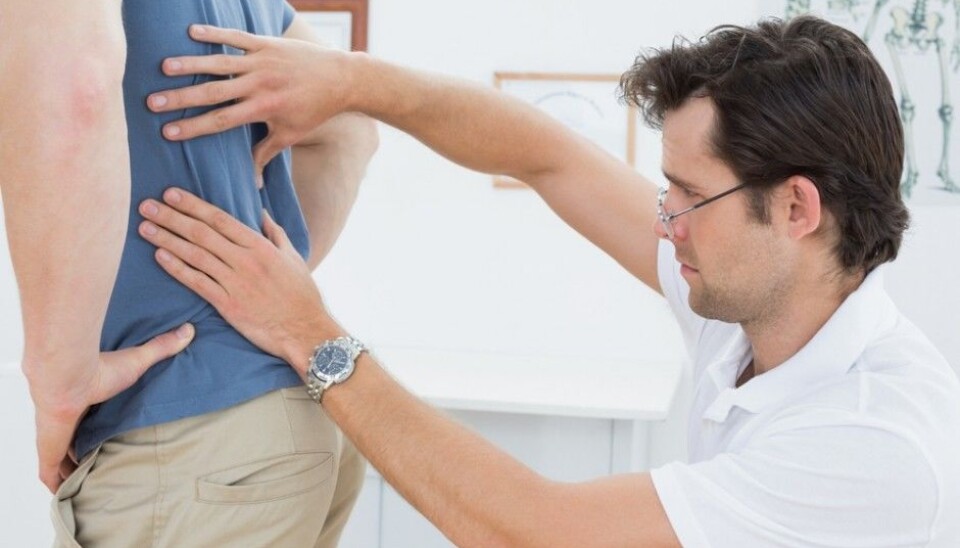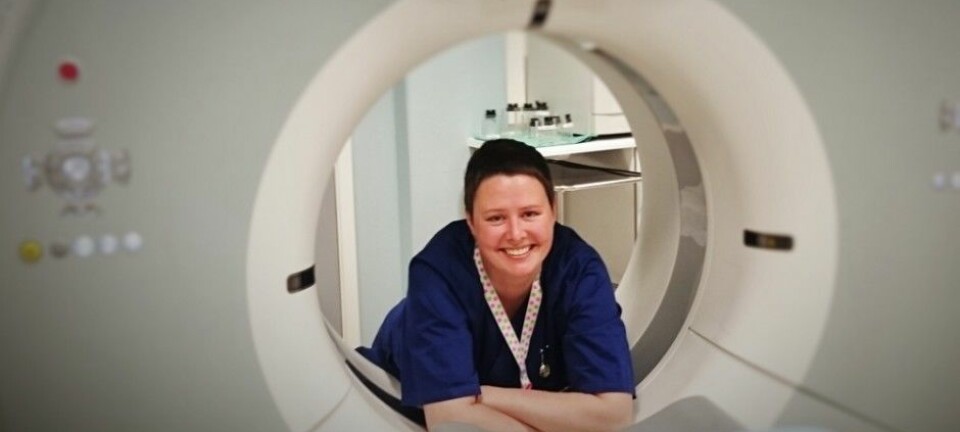
What works best for back pain?
Your back is robust and you should use it. This is the message that many back patients are hearing from their doctor today. But is that enough? Do they recover more quickly if they receive more treatment, like physical therapy?
In a new study on back pain, researchers tested three different types of treatment in 214 patients. All the participants had been on sick leave for two to ten months.
All the patients received a short-term intervention lasting between two and four hours.
During the treatment, the doctor thoroughly examined patients to rule out any underlying cause for medical follow-up. The doctor was a specialist in physical medicine and rehabilitation.
Then the goal was to assure patients that they shouldn’t be afraid of using their backs. This message was repeated and confirmed by a physiotherapist either on the same day or the following day.
The physiotherapist asked patients to move in ways that that they were afraid to. This was to demonstrate that although some movements – like bending at a particular angle or jumping down from a small stool – might be painful, they don’t harm one’s back.
Was more treatment better?
The message in this short-term intervention was that all activity is good activity – or in other words, going to work is preferable to being on sick leave.
This has previously been shown to be an effective treatment for back patients, both those with chronic pain and acute pain. It helps many individuals, but not everyone.
"We were interested in investigating whether some patients could benefit from getting additional treatment," says main researcher Anette Harris at the University of Bergen. The University of Bergen, Friskvernsklinikken – a private interdisciplinary specialist health clinic – and Uni Research Health collaborated on the research project.
Patients on long-term sick leave were randomly divided into three groups after everyone had received the initial brief intervention.
One group took part in physical group exercise led by a physiotherapist three times a week. The treatment lasted for three months.
A second group received group cognitive-behavioural therapy led by a psychiatrist for the same length of time, but only once per week.
The third group received no further treatment beyond the first brief cognitive intervention.
The shorter the better
In both groups receiving additional treatment, the message was the same as in the brief intervention: it's good to be active.
"We were excited about whether patients would experience beneficial effects from the two extended group treatments. Instead, we found that the brief intervention had the same effect as the two different longer treatments, both in terms of increased participation in work, function, health problems and fear of work-related pain.
The brief initial treatment was the most effective in getting patients with muscle pain back to work more quickly.
Took on patient role
Harris believes the reason is that participants offered a longer treatment option fell into patient mode. They became more unsure and careful about using their backs. They were on their way to getting healthy, but as long as treatment continued, they still behaved like patients.
"Individuals who received the brief intervention and were told that it was good to go back to work didn’t take on this patient role to the same extent. I think that's a decisive factor that helped them return to work faster,” says Harris.
Same applies to slipped discs
"This study just confirms what previous research has shown, that short-term interventions for back pain work," said Harris.
She notes that the special thing with this study is that patients had been on sick leave for so long. Most of the individuals in the study had been sick listed for four months or more, many for up to seven months, she says.
The patients on long-term sick leave had several types of nonspecific back pain.
“Some patients did have slipped discs. But just like with back pain caused by other factors, such as a pulled muscle, most slipped disc conditions also resolve on their own. Many people actually have a slipped disc without noticing any symptoms,” Harris says.
The short-term treatment was also more effective for patients with a slipped disc.
Not surprised
Norwegian doctor and back researcher Aage Indahl isn’t surprised at the outcome of the study.
He believes that the most common forms of treatment for nonspecific back pain, physiotherapy and chiropractic, have not shown any detectable effect in studies.
He thinks the more back treatment patients receive, the sicker they get. This leads to frequent and extended sick leave.
Indahl was the first to develop a model for a brief cognitive intervention for back patients in Norway. In short, this approach helps patients let go of the worry that they will hurt their backs.
The model is now quite established in the treatment of back patients, both in doctors’ offices and in business.
Many back-related myths
A lot of what we’ve believed and done about back pain is simply incorrect, says Indahl.
"It's not true that discs can loosen and shift because people sit or lift something the wrong way. There is no such thing as the wrong use of our backs. Except for not using it,” he says.
"We’ve been taught to believe that the back is weak and that the discs are vulnerable. We’ve also learned that it’s appropriate to be careful not to lift too heavy loads and not to lift things wrong. I realized early on that this couldn’t be right and started to get interested in the core muscles.
Indahl says that we have nearly 70 smaller back muscles that serve a fine adjustment function. Their interactions are more important than muscle strength, he says.
“The back is robust. You can lift and sit however you want to. Lifelong heavy loads don’t cause more wear and tear. And you don’t cause slipped discs by loading your back. No professions have more slipped discs than others,” he adds.
Indahl believes the most dangerous thing we do is to be careful.
Some people do have more back pain
Indahl believes it’s true that some individuals have more back pain than others. And some work tasks cause more back pain than others," he says.
"We don’t know why some people have greater and more prolonged back pain than others. But we know that it's very rarely due to an injury,” he says.
"If I change the tires on my car, my back is sore after I finish four tires. It just means that I’ve exposed my back muscles to a task that doesn’t get exercised more than twice a year.
No scientific evidence shows that any kind of treatment for back pain reduces absenteeism due to illness," says Indahl. Except for one.
Understanding our backs
"Patients who realize their backs are strong return to work faster than if they go through lengthy testing and treatment,” he says.
But this insight and knowledge needs to be conveyed properly. Patients' pain has to be taken seriously. They must make the choice themselves and have the experience of coping successfully, says the back researcher.
Jan Sture Skouen, a professor at the University of Bergen, says that muscle and skeletal disorders in the Norwegian population reflect major social differences.
"Often, patients with long-term nonspecific neck and back pain are from lower social strata," he says.
A necessary pain?
Back pain hurts. But Indahl wonders if it might be a necessary pain.
“Back pain may be part of the aging process. But it doesn’t do any good to sit down on the sofa and think you'd like to hike in the mountains when you're 70 years old. You have to get into the mountains and get sore.
"We need to exert different stresses on our backs to keep them healthy. The most dangerous thing is to sit still,” he says.
-------------------------------------
Read the Norwegian version of this article at forskning.no
































